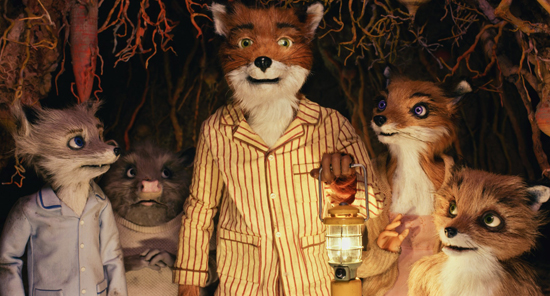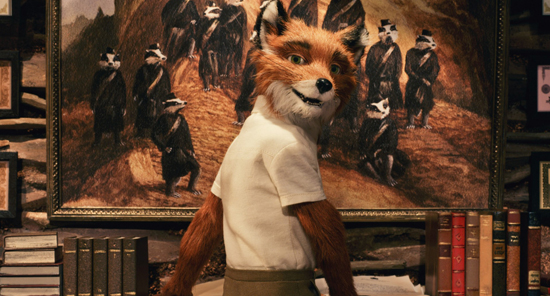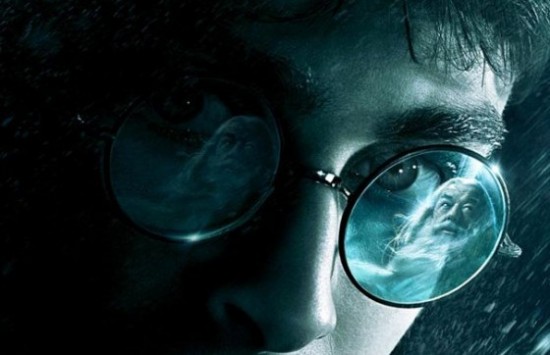

Walter Cronkite, who pioneered and then mastered the role of television news anchorman with such plain-spoken grace that he was called the most trusted man in America, died Friday at his home in New York. He was 92.
Walter Cronkite on the air in the early 1960s. For decades on CBS, he signed off with his signature “And that’s the way it is.”
The cause was complications of dementia, said Chip Cronkite, his son.
From 1962 to 1981, Mr. Cronkite was a nightly presence in American homes and always a reassuring one, guiding viewers through national triumphs and tragedies alike, from moonwalks to war, in an era when network news was central to many people’s lives.
He became something of a national institution, with an unflappable delivery, a distinctively avuncular voice and a daily benediction: “And that’s the way it is.” He was Uncle Walter to many: respected, liked and listened to. With his trimmed mustache and calm manner, he even bore a resemblance to another trusted American fixture, another Walter — Walt Disney.
Along with Chet Huntley and David Brinkley on NBC, Mr. Cronkite was among the first celebrity anchormen. In 1995, 14 years after he retired from the “CBS Evening News,” a TV Guide poll ranked him No. 1 in seven of eight categories for measuring television journalists. (He professed incomprehension that Maria Shriver beat him out in the eighth category, attractiveness.) He was so widely known that in Sweden anchormen were once called Cronkiters.
Yet he was a reluctant star. He was genuinely perplexed when people rushed to see him rather than the politicians he was covering, and even more astonished by the repeated suggestions that he run for office himself. He saw himself as an old-fashioned newsman — his title was managing editor of the “CBS Evening News” — and so did his audience.
“The viewers could more readily picture Walter Cronkite jumping into a car to cover a 10-alarm fire than they could visualize him doing cerebral commentary on a great summit meeting in Geneva,” David Halberstam wrote in “The Powers That Be,” his 1979 book about the news media.
As anchorman and reporter, Mr. Cronkite described wars, natural disasters, nuclear explosions, social upheavals and space flights, from Alan Shepard’s 15-minute ride to lunar landings. On July 20, 1969, when the Eagle touched down on the moon, Mr. Cronkite exclaimed, “Oh, boy!”
On the day President John F. Kennedy was assassinated, Mr. Cronkite briefly lost his composure in announcing that the president had been pronounced dead at Parkland Memorial Hospital in Dallas. Taking off his black-framed glasses and blinking back tears, he registered the emotions of millions.
It was an uncharacteristically personal note from a newsman who was uncomfortable expressing opinion.
“I am a news presenter, a news broadcaster, an anchorman, a managing editor — not a commentator or analyst,” he said in an interview with The Christian Science Moniter in 1973. “I feel no compulsion to be a pundit.”
But when he did pronounce judgment, the impact was large.
In 1968, he visited Vietnam and returned to do a rare special program on the war. He called the conflict a stalemate and advocated a negotiated peace. President Lyndon B. Johnson watched the broadcast, Mr. Cronkite wrote in his 1996 memoir, “A Reporter’s Life,” quoting a description of the scene by Bill Moyers, then a Johnson aide.
“The president flipped off the set,” Mr. Moyers recalled, “and said, ‘If I’ve lost Cronkite, I’ve lost middle America.’ ”
Mr. Cronkite sometimes pushed beyond the usual two-minute limit to news items. On Oct. 27, 1972, his 14-minute report on Watergate, followed by an eight-minute segment four days later, “put the Watergate story clearly and substantially before millions of Americans” for the first time, the broadcast historian Marvin Barrett wrote in “Moments of Truth?” (1975).
In 1977, his separate interviews with President Anwar el-Sadat of Egypt and Prime Minister Menachem Begin of Israel were instrumental in Sadat’s visiting Jerusalem. The countries later signed a peace treaty.
“From his earliest days,” Mr. Halberstam wrote, “he was one of the hungriest reporters around, wildly competitive, no one was going to beat Walter Cronkite on a story, and as he grew older and more successful, the marvel of it was that he never changed, the wild fires still burned.”
Walter Leland Cronkite Jr. was born on Nov. 4, 1916, in St. Joseph, Mo., the son of Walter Leland Cronkite Sr., a dentist, and the former Helen Lena Fritsche. His ancestors had settled in New Amsterdam, the Dutch colony that became New York. As a boy, Walter peddled magazines door to door and hawked newspapers. As a teenager, after the family had moved to Houston, he got a job with The Houston Post as a copy boy and cub reporter. At the same time, he had a paper route delivering The Post to his neighbors.
“As far as I know, there were no other journalists delivering the morning paper with their own compositions inside,” he wrote in his autobiography.
When he was 16, Mr. Cronkite went with friends to Chicago for the 1933 World’s Fair. He volunteered to help demonstrate an experimental version of television.
“I could honestly say to all of my colleagues, ‘I was in television long before you were,’ ” he said in an interview with CBS News in 1996.
Mr. Cronkite attended the University of Texas for two years, studying political science, economics and journalism, working on the school newspaper and picking up journalism jobs with The Houston Press and other newspapers. He also auditioned to be an announcer at an Austin radio station but was turned down. He left college in 1935 without graduating to take a job as a reporter with The Press.
While visiting Kansas City, Mo., he was hired by the radio station KCMO to read news and broadcast football games under the name Walter Wilcox. (Radio stations at the time wanted to “own” announcers’ names so that popular ones could not be taken elsewhere.)
He was not at the games but received cryptic summaries of each play by telegraph. These provided fodder for vivid descriptions of the action. He added details of what local men in the stands were wearing, which he learned by calling their wives. He found out in advance what music the band would be playing so he could describe halftime festivities.
At KCMO, Mr. Cronkite met an advertising writer named Mary Elizabeth Maxwell. The two read a commercial together. One of Mr. Cronkite’s lines was, “You look like an angel.” They were married for 64 years until her death in 2005.
In addition to his son, Walter Leland III, known as Chip, Mr. Cronkite is survived by his daughters, Nancy Elizabeth and Mary Kathleen; and four grandsons.
In his last years, Joanna Simon, a former opera singer and sister of Carly Simon, was his frequent companion.
The family said it was planning a private service at St. Bartholemew’s Church in New York.
After being fired from KCMO in a dispute over journalism practices he considered shabby, Mr. Cronkite in 1939 landed a job at the United Press news agency, now United Press International. He reported from Houston, Dallas, El Paso and Kansas City.
The stint ended when he returned to radio and then took a job with Braniff International Airways in Kansas City, selling tickets and doing public relations.
Returning to United Press after a few months, he became one of the first reporters accredited to American forces with the outbreak of World War II. He gained fame as a war correspondent, crash-landing a glider in Belgium, accompanying the first Allied troops into North Africa, reporting on the Normandy invasion and covering major battles, including the Battle of the Bulge, in 1944.
In 1943, Edward R. Murrow asked Mr. Cronkite to join his wartime broadcast team in CBS’s Moscow bureau. In “The Murrow Boys: Pioneers on the Front Lines of Broadcast Journalism” (1996), Stanley Cloud and Lynne Olson wrote that Murrow was astounded when Mr. Cronkite rejected his $125-a-week job offer and decided to stay with United Press for $92 a week.
That year Mr. Cronkite was one of eight journalists selected for an Army Air Forces program that took them on a bombing mission to Germany aboard B-17 Flying Fortresses. Mr. Cronkite manned a machine gun until he was “up to my hips in spent .50-caliber shells,” he wrote in his memoir.
After covering the Nuremberg war-crimes trials and then reporting from Moscow from 1946 to 1948, he again left print journalism to become the Washington correspondent for a dozen Midwestern radio stations. In 1950, Murrow successfully recruited him for CBS.
Mr. Cronkite was assigned to develop the news department of a new CBS station in Washington. Within a year he was appearing on nationally broadcast public affairs programs like “Man of the Week,” “It’s News to Me” and “Pick the Winner.”
In February 1953 he narrated the first installment of his long-running series “You Are There,” which recreated historic events like the Battle of the Alamo or the Hindenburg disaster and reported them as if they were breaking news. Sidney Lumet, soon to become a well-known filmmaker, directed the series.
“What sort of day was it?” Mr. Cronkite said at the end of each episode. “A day like all days, filled with those events that alter and illuminate our times. And you were there.”
In 1954, when CBS challenged NBC’s popular morning program “Today” with the short-lived “Morning Show,” it tapped Mr. Cronkite to be the host. Early on he riled the sponsor, the R. J. Reynolds Tobacco Company, by grammatically correcting its well-known advertising slogan, declaring, “Winston tastes good as a cigarette should.”
When not interviewing guests, he mulled over the news with a witty and erudite puppet lion, Charlemagne. Occasionally he ventured outside the studio — using a tugboat, for example, to meet luxury liners so he could interview celebrities before they landed.
In 1952, the first presidential year in which television outshined radio, Mr. Cronkite was chosen to lead the coverage of the Democratic and Republican national conventions. By Mr. Cronkite’s account, it was then that the term “anchor” was first used — by Sig Mickelson, the first director of television news for CBS, who had likened the chief announcer’s job to an anchor that holds a boat in place. Paul Levitan, another CBS executive, and Don Hewitt, then a young producer, have also been credited with the phrase.
The 1952 conventions made Mr. Cronkite a star. Mr. Mickelson, he recalled, told him: “You’re famous now. And you’re going to want a lot more money. You’d better get an agent.”
Mr. Cronkite went on to anchor every national political convention and election night until 1980, with the exception of 1964. That year he was replaced at the Democratic convention in Atlantic City by Roger Mudd and Robert Trout in an effort to challenge NBC’s Huntley and Brinkley team, which had won the ratings battle at the Republican convention in San Francisco that summer.
In 1961, Mr. Cronkite replaced Murrow as CBS’s senior correspondent, and on April 16, 1962, he began anchoring the evening news, succeeding Douglas Edwards, whose ratings had been low. As managing editor, Mr. Cronkite also helped shape the nightly report.
The evening broadcast had been a 15-minute program, but on Sept. 2, 1963, CBS doubled the length to a half-hour, over the objections of its affiliates. Mr. Cronkite interviewed President Kennedy on the first longer broadcast, renamed the “CBS Evening News With Walter Cronkite.” He also broadcast from a real newsroom and not, as Edwards had done, from a studio set.
At the time the broadcast was lengthened, Mr. Cronkite inaugurated his famous sign-off, “And that’s the way it is.” The original idea, he later wrote, had been to end each broadcast with a quirky news item, after which he would recite the line with humor, sadness or irony.
Richard S. Salant, the president of CBS News, hated the line from the beginning — it ate up a precious four seconds a night — and the offbeat items were never done.
“I began to think Dick was right, but I was too stubborn to drop it,” Mr. Cronkite wrote.
Starting with Herbert Hoover, Mr. Cronkite knew every president, not always pleasantly. A top aide to President Richard M. Nixon, Charles Colson, harangued the network’s chairman, William S. Paley, after Mr. Cronkite’s 14-minute Watergate broadcast. The next segment was shortened.
In 1960, during the Wisconsin primary, Mr. Cronkite asked Kennedy, then a senator, about his Roman Catholic religion. As Mr. Cronkite recalled in his memoir, Kennedy called Frank Stanton, CBS’s president, to complain that questions about the subject had earlier been ruled out of bounds. He then reminded Mr. Stanton that if he were elected he would be appointing members of theFederal Communications Commission. Mr. Stanton “courageously stood up to the threat,” Mr. Cronkite wrote.
By contrast, Mr. Cronkite’s relations with President Dwight D. Eisenhower so cordial that President Kennedy incorrectly assumed Mr. Cronkite, a political independent, was a Republican.
Mr. Cronkite also enjoyed the company of President Ronald Reagan, with whom he exchanged often off-color jokes. And he whimsically competed with his friend Johnny Carson to see who could take the most vacation time without getting fired.
Mr. Cronkite raced sports cars but switched to sailing so he could spend more time with his family. He liked old-time pubs and friendly restaurants; there was even one in Midtown Manhattan where his regular chair was marked with his initials.
In an interview with The New York Times in 2002, Mr. Cronkite scrunched his eyes and lowered his voice into a theatrical sob when asked if he regretted missing out on the huge salaries subsequent anchors had received.
“Yes,” he said, adding, “I frequently call myself the Micky Mantle of network news.”
Mr. Cronkite retired in 1981 at 64. He had repeatedly promised to do so, but few had either believed him or chosen to hear. CBS was eager to replace him with Dan Rather, who was flirting with ABC, but both Mr. Cronkite and the network said he had not been pushed.
After his retirement he continued to be seen on CBS as the host of “Walter Cronkite’s Universe,” a science series that began in 1980 and ran until 1982. The network also named him a special correspondent; the position turned out to be largely honorary, though news reports said it paid $1 million a year. But after he spent 10 years on the board of CBS, where he chafed at the cuts that the network’s chairman, Laurence A. Tisch, had made in a once-generous news budget, more and more of his broadcast work appeared on CNN, National Public Radio and elsewhere, not CBS.
By the time Mr. Rather was leaving the “CBS Evening News” in 2005, Mr. Cronkite had abandoned mincing words. He criticized his successor as “playing the role of newsman” rather than being one. Mr. Rather should have been replaced years earlier, he said.
When Katie Couric took over the job in September 2006, Mr. Cronkite introduced her on the air and praised her in interviews.
His long “retirement” was not leisurely. When Senator John Glenn went back into space on the shuttle Discovery in 1998, 36 years after his astronaut days, Mr. Cronkite did an encore in covering the event for CNN. He made some 60 documentaries. And among many other things, he was the voice of Benjamin Franklin on the PBS cartoon series “Liberty’s Kids,” covered a British general election for a British network and for many years served as host of the annual Kennedy Center Honors.
He had already won Emmy Awards, a Peabody and the Presidential Medal of Freedom (in 1981), and he continued to pile up accolades. Arizona State University named its journalism school after him.
In July 2006, PBS broadcast a 90-minute “American Masters” special on Mr. Cronkite’s career. Mr. Lumet, the filmmaker, appeared and said, “He seemed to me incorruptible in a profession that was easily corrupted.”
On his 90th birthday, Mr. Cronkite told The Daily News, “I would like to think I’m still quite capable of covering a story.”
But he knew he had to stop sometime, he allowed in his autobiography. He promised at the time to continue to follow news developments “from a perch yet to be determined.”
“I just hope that wherever that is, folks will still stop me, as they do today, and ask, ‘Didn’t you used to be Walter Cronkite?’ ”
Just In Case The World Explodes In 42 Hours..














